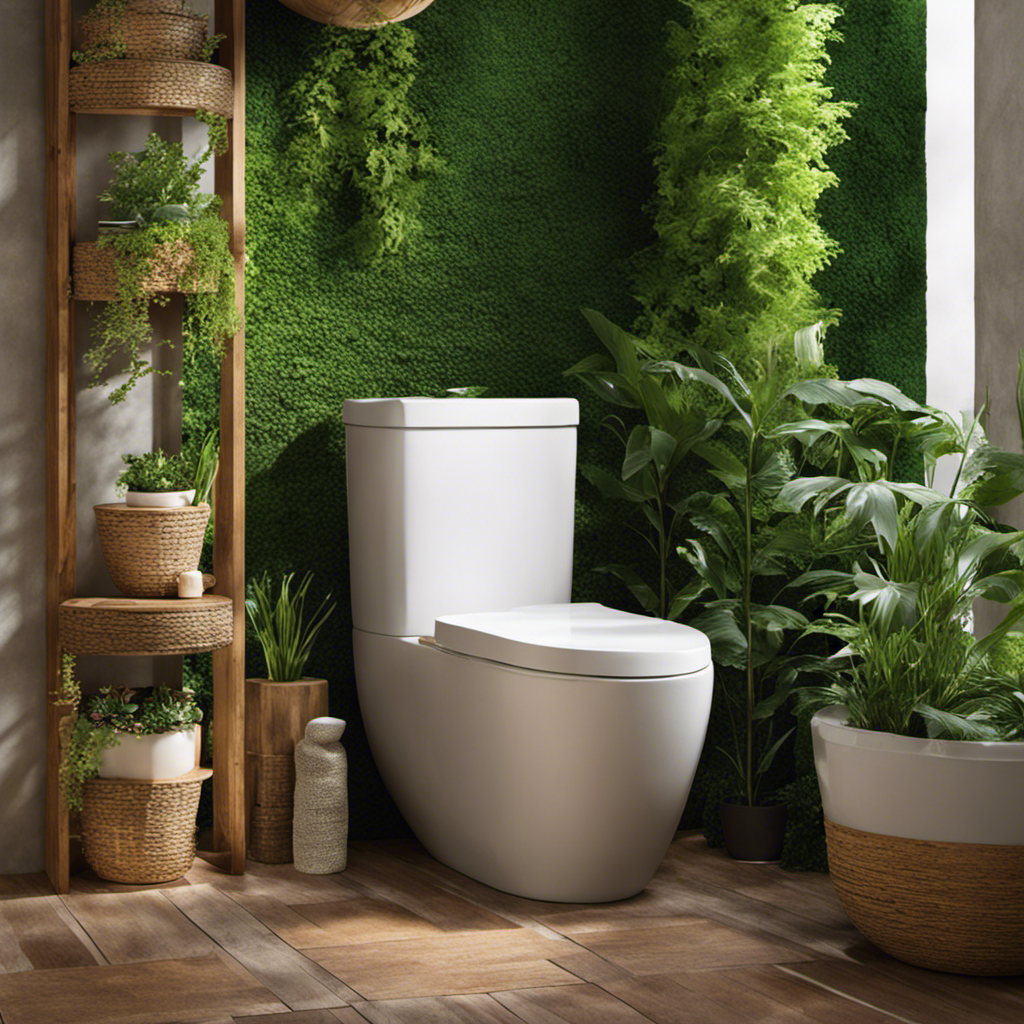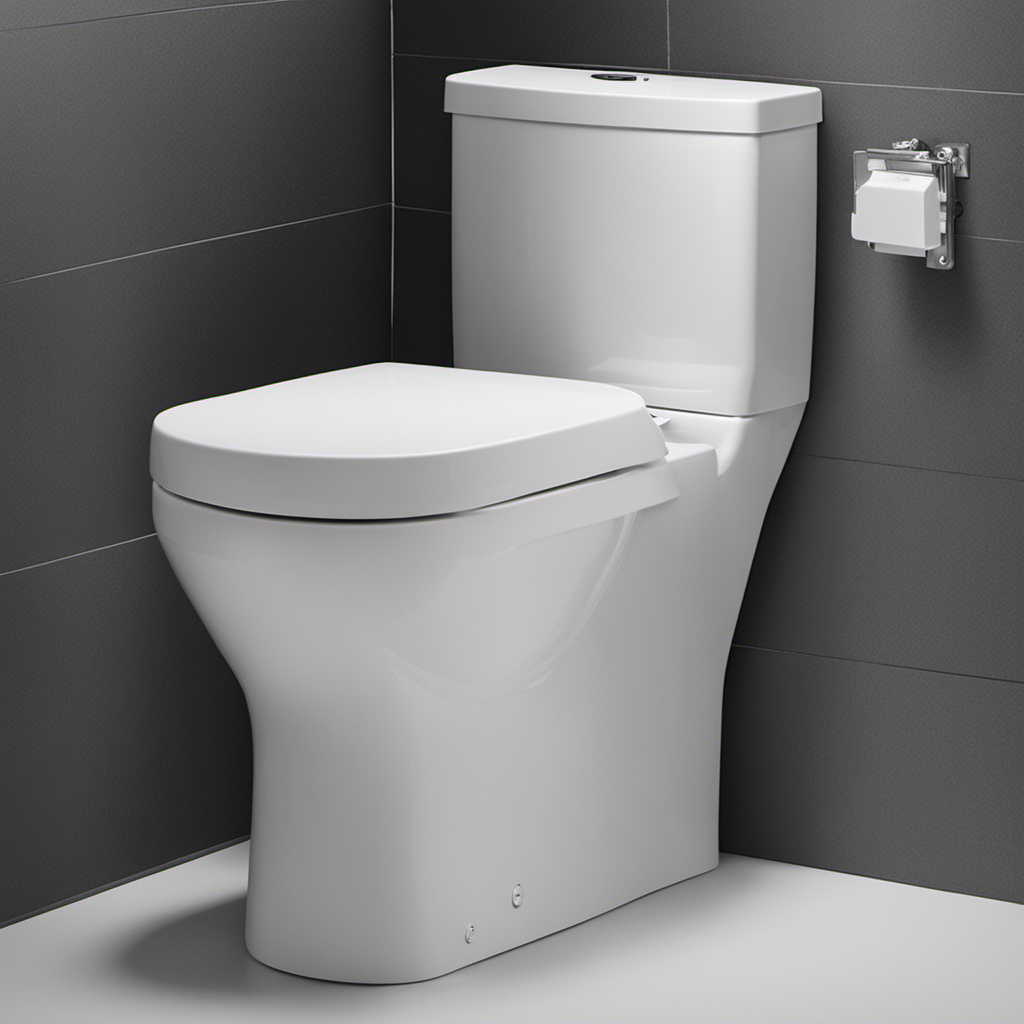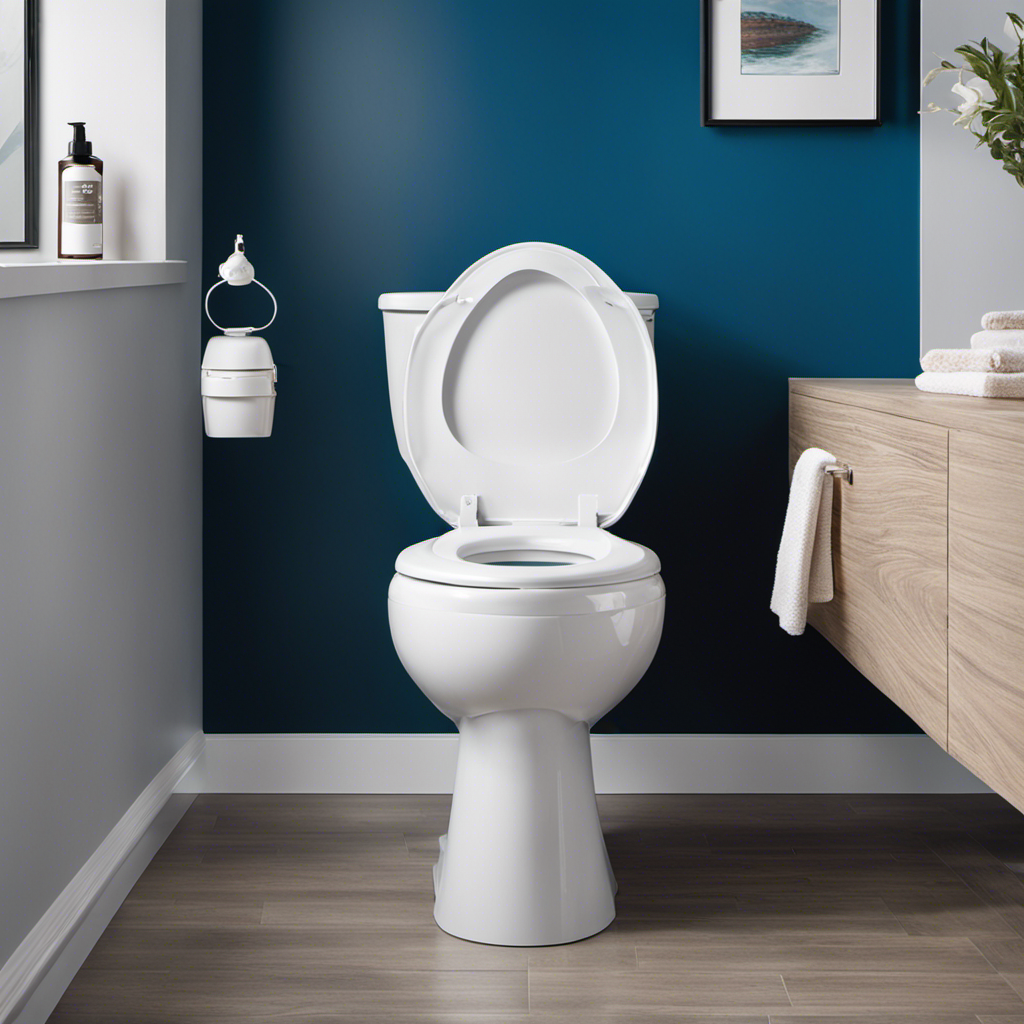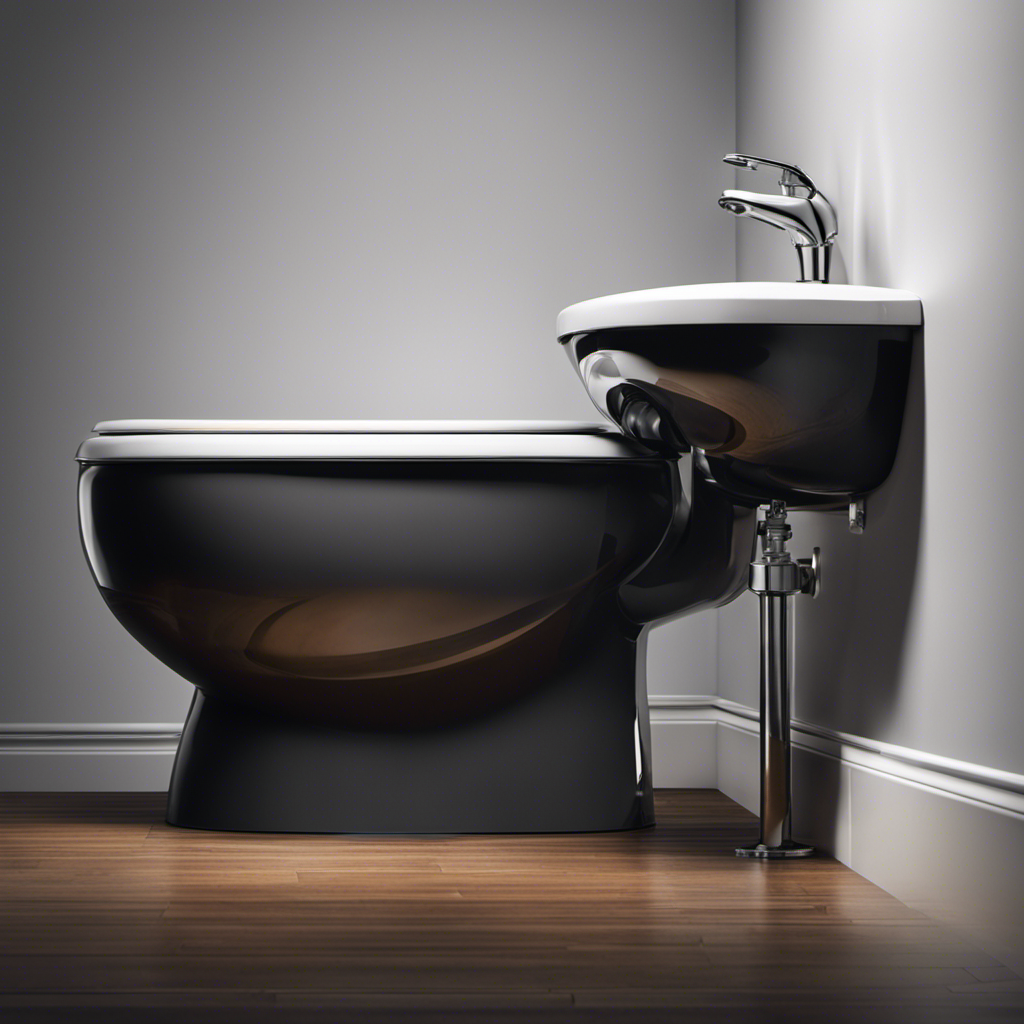So you’re planning a trip to a Spanish-speaking country, but you’re worried about the language barrier. One thing you might be wondering is, ‘How do you say toilet in Spanish?’
Well, fear not! In this article, I’ll provide you with the common Spanish words for toilet, along with their translations.
We’ll also explore other bathroom terms and useful phrases to help you navigate this essential aspect of daily life.
So, let’s dive in and learn how to say toilet in Spanish!
Key Takeaways
- ‘Baño’ is the most common translation for ‘bathroom’ in Spanish.
- ‘Aseo’ and ‘servicio’ are also used in informal settings or among friends.
- ‘Retrete’ is a slang term for ‘toilet’ in Spanish.
- It is recommended to use more standard words like ‘baño’ or ‘aseo’ in formal or professional settings.
Common Spanish Words for Toilet
If you need to ask where the bathroom is in Spanish, you would say ‘¿Dónde está el baño?’ The word ‘baño’ is the most common translation for ‘bathroom’ in Spanish.
However, in informal settings or among friends, you might also hear the word ‘aseo’ or ‘servicio’ being used. These words are more commonly used in Latin American Spanish.
When it comes to slang for ‘toilet’ in Spanish, the word ‘retrete’ is commonly used. This word is more informal and might not be appropriate in all situations.
It’s important to note that Spanish slang can vary depending on the region, so it’s always a good idea to use the more standard words like ‘baño’ or ‘aseo’ when speaking in a formal or professional setting.
Translations for Toilet in Spanish
The word for toilet in Spanish is ‘baño’. When it comes to using the toilet in Spanish-speaking countries, there are a few common phrases you should know. Here are some useful phrases for using the toilet:
- ¿Dónde está el baño? (Where is the bathroom?)
- Necesito ir al baño. (I need to go to the bathroom.)
- ¿Puedo usar el baño? (Can I use the bathroom?)
In addition to the common phrases, there are also some slang terms for toilet in Spanish. These vary by region, but here are a few examples:
- El retrete (The toilet)
- El excusado (The toilet)
- El sanitario (The toilet)
Remember to use these phrases respectfully and in appropriate situations. It’s always helpful to learn the local slang to better communicate with native speakers.
Spanish Vocabulary: Bathroom Terms
When it comes to bathroom terminology, there are some interesting variations in how different languages and regions refer to the toilet.
In this discussion, I will explore these translation variations and provide some common phrases used in the bathroom.
Additionally, I will delve into regional bathroom terminology, highlighting the unique terms and expressions used in different parts of the world.
Toilet" Translation Variations
You can say ‘baño’ or ‘servicio’ when referring to the toilet in Spanish. However, there are also some slang expressions that are commonly used in different Spanish-speaking countries. Here are three interesting variations:
-
‘El trono’: In some regions, the toilet is humorously referred to as ‘the throne,’ emphasizing the importance of this private space.
-
‘El sanitario’: This term is often used in Mexico to refer to the toilet, and it derives from the word ‘sanitary’ in English.
-
‘El retrete’: This is another common word for toilet in Spanish, used in Spain and some Latin American countries.
These variations demonstrate the diverse ways in which Spanish speakers refer to the toilet in their everyday language.
Now, let’s move on to some common bathroom phrases that you may find useful.
To continue learning about common bathroom phrases in Spanish, please proceed to the next section.
Common Bathroom Phrases
Now let’s explore some common phrases you might hear in a bathroom.
When it comes to bathroom language, there are certain phrases that are universally understood, while others may vary by region.
For example, in English-speaking countries, you might commonly hear phrases like ‘wash your hands,’ ‘flush the toilet,’ or ‘use the restroom.’
However, in different parts of the world, regional bathroom terminology may be used. In the UK, for instance, you might hear phrases such as ‘loo’ or ‘lavatory’ instead of ‘toilet.’ Similarly, in Australia, the term ‘dunny’ is commonly used.
These variations in common bathroom phrases highlight the rich diversity of language and cultural practices around the world.
Regional Bathroom Terminology
Take a moment to consider the various regional bathroom terminology used around the world. It’s fascinating to see how different cultures have their own unique ways of referring to the toilet. Here are some interesting regional toilet customs and cultural differences in bathroom terminology:
-
In the United States, it’s common to use the word ‘bathroom’ or ‘restroom’ to refer to the toilet.
-
In the United Kingdom, the term ‘loo’ or ‘toilet’ is commonly used.
-
In Australia, you’ll often hear the word ‘dunny’ or ‘lavatory’ being used.
These regional differences highlight the diverse ways in which people around the world communicate about something as basic as using the bathroom.
Now, let’s explore how to say toilet in Spanish.
How to Say Toilet in Spanish
The word for toilet in Spanish is ‘baño.’ It is a common word used in most Spanish-speaking countries, including Latin American countries. However, there are also regional variations for the word ‘toilet’ in Latin American Spanish. Here are some common phrases you can use to ask where the toilet is:
- ¿Dónde está el baño? – Where is the bathroom?
- ¿Puede indicarme dónde está el baño? – Can you show me where the bathroom is?
- ¿Me podría decir dónde se encuentra el baño? – Could you tell me where the bathroom is located?
In Latin America, you may also come across these words for toilet:
- ‘Servicio’ – commonly used in Mexico and some Central American countries.
- ‘Sanitario’ – used in various Latin American countries.
- ‘W.C.’ – an abbreviation borrowed from English and used in some countries.
Knowing these words and phrases will be helpful when traveling to Spanish-speaking countries and needing to find a restroom.
Words for Toilet in the Spanish Language
Remember, it’s helpful to know the different words and phrases for the bathroom when traveling to Spanish-speaking countries. Here are some of the different words for toilet in various Spanish-speaking countries:
- In Spain, the word for toilet is ‘inodoro’ or ‘retrete.’
- In Mexico, they commonly use the word ‘baño’ or ‘sanitario.’
- In Argentina, you might hear the word ‘váter’ or ‘water.’
Spanish slang for toilet can vary as well. Some common slang words include:
- ‘Trono’ or ‘taza’ in Spain.
- ‘Escusado’ or ‘retrete’ in Mexico.
- ‘Bolicho’ or ‘báter’ in Argentina.
Knowing these words and phrases can help you navigate the bathroom facilities with ease during your travels. It’s always a good idea to familiarize yourself with the local terminology to avoid any confusion.
Useful Spanish Phrases: Talking About Toilets
When traveling to a Spanish-speaking country, it’s important to know the essential vocabulary for the bathroom. This includes words for toilet paper, soap, and towels, which can come in handy in public restrooms.
Additionally, it’s important to be familiar with polite restroom requests, such as asking for more toilet paper or indicating that the restroom needs to be cleaned.
Bathroom Essentials in Spanish
To say ‘toilet’ in Spanish, you can use the word ‘baño’. As a native Spanish speaker, I can provide you with some essential bathroom phrases and cultural differences in bathroom etiquette that you may find interesting:
-
Common Bathroom Phrases:
-
‘¿Dónde está el baño?’ – This means ‘Where is the bathroom?’ and it’s a useful phrase to know when you’re in a new place.
-
‘¿Puedo usar el baño?’ – This translates to ‘Can I use the bathroom?’ and is a polite way to ask for permission.
-
‘Necesito papel higiénico’ – This phrase means ‘I need toilet paper’ and can come in handy if you find yourself in need.
-
Cultural Differences in Bathroom Etiquette:
-
In some Spanish-speaking countries, it is common to throw toilet paper in a trash can instead of flushing it down the toilet.
-
It is considered polite to keep the bathroom clean and leave it as you found it.
-
In many Spanish-speaking countries, it is customary to greet others with a kiss on the cheek, even in the bathroom.
Remember to keep these phrases in mind and respect the cultural differences when using the bathroom in Spanish-speaking countries.
Polite Restroom Requests
If you need to use the restroom, it’s polite to ask for permission by saying ‘Can I use the bathroom?’
It’s important to be respectful of others and their space, especially when it comes to something as personal as using the restroom.
Different cultures may have different expectations and customs when it comes to bathroom etiquette.
For example, in some cultures, it is customary to remove your shoes before entering the bathroom, while in others it is considered impolite to make any noise while using the facilities.
Understanding and respecting these cultural differences can help avoid any misunderstandings or awkward situations.
In the next section, we will explore some of these cultural bathroom etiquette practices in more detail.
Cultural Bathroom Etiquette
Understanding and respecting cultural bathroom etiquette can help avoid any misunderstandings or awkward situations. When traveling to different countries, it’s important to familiarize yourself with the local customs and practices surrounding the use of public restrooms.
Here are some interesting cultural bathroom practices to keep in mind:
-
In Japan:
-
Slippers are often provided outside the restroom for you to wear inside.
-
Many toilets are equipped with bidet functions and heated seats.
-
It is customary to flush the toilet both before and after use.
-
In France:
-
It’s common to find squat toilets in public restrooms.
-
Some public restrooms require payment for use.
-
Always remember to carry your own toilet paper as it may not be provided.
-
In India:
-
It is customary to use the left hand for cleaning oneself after using the toilet.
-
Many public toilets in India are squat toilets, so be prepared for that.
-
It is considered disrespectful to touch someone’s head or face after using the restroom.
Conclusion
In conclusion, learning how to say ‘toilet’ in Spanish is not only useful for travelers, but also for anyone interested in expanding their vocabulary.
From the common words for toilet to the translations and bathroom terms, there are various ways to express this concept in Spanish.
So, next time you find yourself in a Spanish-speaking country or having a conversation about bathrooms, remember these useful phrases.
Coincidentally, it’s amazing how something as basic as a toilet can connect us across different languages and cultures.










